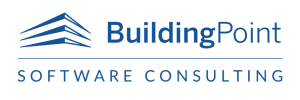Following are some common issues that we have seen during the 18 years we have spent doing client resolution work for Sage Timberline Professional Services Group. The following list is the result of a collaborative effort among several longtime Timberline consultants.
1. Planning
A. Too many software implementations fail, simply because anticipated impact on the company is not fully understood before the project begins. Measureable business impact, such as improved billing cycles, systems that are easier to get to and use, a lower cost of ownership, easy-to-do job projections and forecasts, remote data input and job information, etc., should be clear before beginning any software project.
2. Your Responsibilities
A. Data (the numbers in your financial and project accounting systems) in your current system must be in balance. If the data doesn’t balance before going into Timberline, it won’t balance after going in.
B. Your company must have adequate resources available to work on the project. Trying to work on other major projects at the same time, such as year-end closing and audits, other IT projects, etc., will greatly lower the chances of a successful software implementation.
3. Project Management
During project kickoff, the implementation team (which includes your staff, your consultant’s team, outside accountants, and other stakeholders) should review roles and responsibilities. Critical items covered should include:
A. Your project’s key factors to success. These would include things such as the ability to forecast projected costs after implementation, the ability to generate WIP and financial statements, and easy access to flash payroll or job information.
B. The project management methodology. Decide what implementation management tools and techniques will be used, how meetings will be organized, how tasks will be assigned and tracked, etc.
C. Clearly defined milestones are crucial. It is important to work toward, recognize, and celebrate accomplishments, as they keep the project on track. Common milestones include: completion of process documentation “as is”; completion of revised processes in the proposed new system design; an end-to-end walkthrough of the new system; the review and approval of mission-critical reports.
D. Be prepared to manage changes. Reports are a great example of this. As people become aware of the power of your new system, many report requests will arise. Determine what the company approval process will be before the consultant schedules the designs.
4. Processes
A. Current processes, such as job award, kick-off, buy-out, AP processes, payroll, billing changes, forecasting, etc., should be thoroughly reviewed and documented before the implementation begins. If your managers need assistance with this critical step they should ask your consultant for help.
B. Key reports, such as cash flow, profitability, etc., should be documented so that all important information for your business is available in the new system on day one.
C. Get the most return from your investment in new software. Go beyond simply implementing your new software to do basic tasks. Make your software work for you, rather than you work for it!
5. Pilot Testing and Training
A. Your software implementation can sometimes feel much like a root canal to you and your staff. However, if you follow these basic, core implementation best practices they will help you stay out trouble. To do this during pilot testing, the following objectives must be met:
B. Staff members must be able to say, “I can do my job with the new system and design.”
C. Finance and operations must approve entries to the general ledger, job cost, and equipment applications.
Key reports must be designed, tested, and signed-off as approved.
6. Verify
Verify that you are getting the maximum from your system. Be sure that your consultant schedules adequate availability immediately after you go live for support. Approximately 45 to 90 days after go-live, a checkup should be performed. This checkup should determine if:
A. Project goals were achieved and impact on your company has been realized.
B. Additional reports are needed, now that users have gotten to work with the new system.
C. Month-end processes are smooth and job profits are being monitored.
While it’s common that software implementations are overwhelming, and many IT projects fail, if you start with a comprehensive plan that makes sense to you, and you then manage against that plan, you will be giving your implementation the best possible chance for success.
During our 20+ years as presenters at TUG conferences, we’ve come to understand a lot of the common issues that companies have with their implementations. So, we’ve made a series of short videos that address these issues.
TUG is a great user group that is committed to helping you get more from your software (we know because we are on the TUG board!). For more info, visit tugweb.com.
If your implementation is going off track, we’d be happy to discuss your situation for free. Just call us at (877) 213-3860 or email info@onpoint-software.com.

